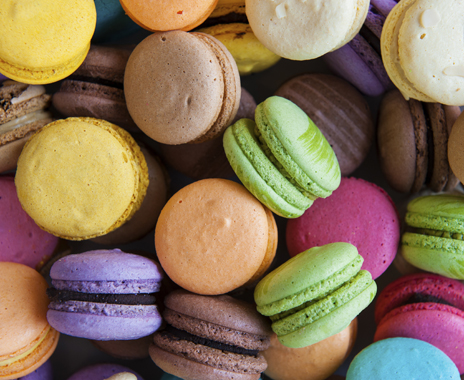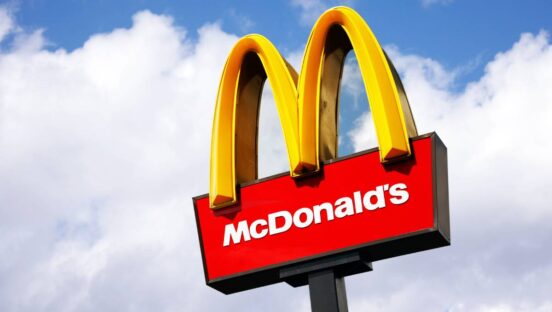As sensory experiences go—the ones we can write about in a respectable, professional publication, at least—it’s hard to top the consumption of sweets when it comes to absolute primal pleasure.
“The moment sugar touches your mouth, a complex cascade of events is triggered involving taste, learning, memory, and reward systems in the brain,” a September 2013 Scientific American article explained. The writer proceeded to catalogue the various steps in the chain reaction that begins with the sweet stuff landing on your tongue and culminates in the brain oozing out the neurotransmitter dopamine, which is, more or less, liquid pleasure.
Now, you don’t need to be a neurosurgeon to see this phenomenon at work or grasp its relevance. Watch a six-year-old tear into a slice of birthday cake, a bag of Halloween candy, or a hot fudge sundae and you’re pretty much watching a dopamine documentary in real time. Watch a college kid heap Nutella onto anything even remotely edible and you’re witnessing the same biological stimulus-response reaction. For that matter, watch a table of middle-aged professionals engage in fork-to-fork combat for the last bite of maple pecan butter almond crunch mud pie at the local casual chain, and it’s clear that our superegos are no match for the reptile-brain impulses that sugars (and fats) induce.
Quick-serve chains have diversified their dessert offerings considerably since the days when their options were limited to a hot apple or cherry “pie”—really, more of a warmed-over strudel pop plucked from a rack stationed under a warming lamp—or a box of animal cracker–type cookies that, while tasty, were hardly the kind of post-meal indulgence you just couldn’t pass up. But there are many more ways to tap into consumers’ pleasure centers. Consider these five trends currently driving new developments in the dessert world.
1. Shared interests. Let’s face it: The line between “Oh, I couldn’t!” and “OK, OK… let’s share one,” is already pretty thin for many of us. But when dessert comes parceled out in small bits and bites, and sharing is the explicit intent, guilt and transgression just don’t hold as much sway; the emphasis shifts from pure decadence to a more dignified and forgivable social experience. This is why dessert “pizzas” are becoming increasingly popular, why dessert sampler plates that began in fine dining are now readily available in many casual concepts, and why fondue and S’more kits are about as ubiquitous as Hershey’s Kisses nowadays. This is an idea still ripe for exploration and creative exploitation.
2. One-track minds. Doughnut shops and ice cream parlors have always been with us, and cake bakeries are nothing new. But rice-pudding emporiums? Crème brûlée carts? Bread pudding outlets? Macaron cafés? Waffle shops? Believe it. Here in the Bay Area, concepts devoted to single, sometimes obscure desserts have become almost commonplace, and while some obviously gain greater long-term traction than others, it’s the execution that’s interesting to me. Could a quick-serve or fast-casual concept hit pay dirt by featuring just one amazing dessert that captures diners’ imaginations and creates a buzz? The idea is at least intriguing, if a little far-fetched.
3. A case of the shakes. Also placing among our CCD Innovation top dessert trends are milkshakes and other dessert drinks fashioned with—wait for it!—beer. Guinness milkshakes have earned more than a tiny cult following (the phrase “Guinness milkshake” conjures more than 10,000 hits on Google, suggesting a growing level of awareness and interest), and other beer-based concoctions are popping up here and there, as well. With more fast-casual concepts gaining licenses to sell beer and wine, the notion of an ice cream soda made with a rich, hearty porter, a sweet oatmeal stout, or even a spicy IPA doesn’t seem too far afield.
4. Savoring the sweet. Almost four years ago, I wrote about the increasing popularity of savory elements in desserts, and the trend has only continued to gather steam since that time. So while you won’t see prosciutto and fig bites in the quick-serve world anytime soon, formerly oddball pairings like bacon and chocolate or salted caramel and chocolate no longer seem quite so foreign. Expect to see more of these counterintuitive pairings straight from the world of molecular gastronomy in years to come.
5. Betwixt and between. All of the foregoing trends could conceivably have some bearing on the fast-food and fast-casual dessert world. But the one trend we’re seeing that clearly seems tailor-made for fast-food environments is the new ice cream sandwich. Think about it: It’s nostalgic, portable, easy to eat, and capable of being reinvented endlessly with different carriers and centers. I can easily see ice cream sandwiches boasting cookies, doughnuts, zucchini or other quickbreads, croissants, sweet flatbreads, or any number of other types of carriers. And the options when it comes to ice cream are at least as many and varied: brown butter candy ice cream, hot chocolate ice cream, horchata ice cream—imagine the possibilities.
My sincere hope is that some of the ideas will spark inspiration and maybe even a prototype or two. Don’t hesitate to drop me a line at Marc@qsrmagazine.com to share your successes. I may even feature one in an upcoming column.











